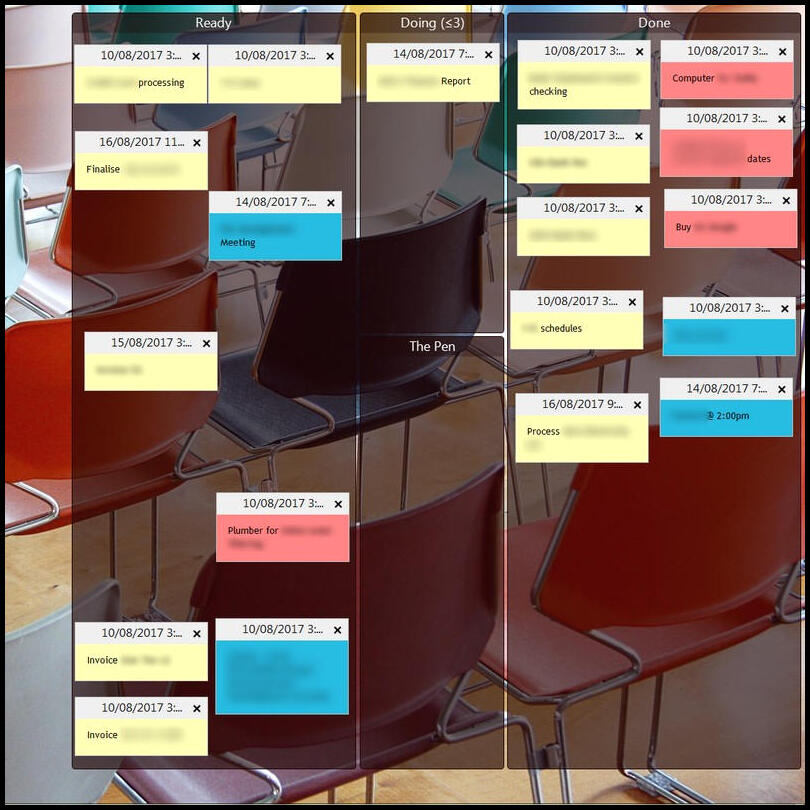A few months ago I read a brief article on a local news website about personal kanban and how it can help organise aspects of our lives.
I’d only ever heard of kanban within the context of manufacturing environments so was intrigued enough to read the article, buy the book and eventually read the book. As a result I have recently begun to implement personal kanban without my work context. The book, Personal Kanban, is by Jim Benson and Tonianne deMaria Barry and was interesting, engaging and funny.
There are two main rules of personal kanban:
- Visualise your work
- Limit your work in progress
Visualising allows you to see your impending tasks in one place - see priorities, see inter-relationships, be able to better select the next task to be done. And limiting ones work in process (the author, Jim Benson, recommends a limit of three) reduces what he calls “existential overhead” which is the confusion that arises from having to juggle too many items in our minds at a time.
I gave some thought as to how I could best create a kanban board for my work (kanban is a Japanese word and means signboard, so a “kanban board” contains a redundancy). Anyway, I tossed up between a physical kanban and one on my computer. Given that I spend 80% of my day working on my computer I thought I’d try that first.
I needed a way of identifying and corralling activities on my desktop so have come up with a combination of electronic sticky notes and fences. I’ve opted for Stickies as my sticky note of choice, and Stardock Fences for the visual corrals. Neither of these programs are mandatory - in fact any file/note/placeholder will serve as a task; and the corrals can be created by just about any drawing program on a wallpaper file. In my case the fences don’t contain or corral the sticky notes - they simply act as locations or boundaries and the sticky notes are overlaid over the fences. I did see a similar use of fences for a desktop-based kanban, but in that case the tasks were computer files or folders that did reside within the fences.
My desktop-based kanban is currently set up as follows:

I have four corrals:
- Ready - work or tasks that are yet to be done. This is where I can see what work awaits.
- Doing - tasks I am currently working on (with a soft limit of three).
- The Pen - this is my one nod to an extension of kanban - where tasks that have been referred to others are stored.
- Done - Jim suggests keeping track of work done as it serves as motifivation to keep going and also affords us an opportunity to reflect on what we did well, what we didn’t enjoy, what we delayed completing, etc. This reflection allows us to improve.
At the moment I am using three colours - one for my normal work (yellow), one for personal/private tasks (blue) and one for work that is outside my normal scope or responsibility (salmon).
Overall I’m quite happy with the kanban process and my implementation. I’ll keep at it as long as it proves useful.